Case Study
Regulation of frequentation and access at Cap de Creus Natural Park
Contact name
Ivan Bustamante Galera
Institution name
Parc Natural de Cap de Creus
Region & country
Catalunya - Spain
Summary
Strong pressure of tourism in sensitive areas made it urgent to reorganize visitors flows. Access of private vehicles was restricted during Easter, summer, and spring and autumn weekends.
At Punta de Cap de Creus nature reserve a car park was enabled and shuttle buses to the iconic Cap de Creus lighthouse were offered.
In Roses, wooden bollards were installed to prevent cars from parking on the edges of road leading to narrow bays. A barrier and access point were located.
With the support of the municipalities, some accesses were finally closed due to incivility and non-compliance with the regulations of the Park.
Regulations were communicated on site (staff) and disseminated among visitors (support from the tourism sector was crucial).
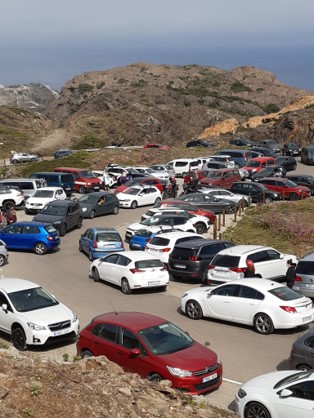
Car Park: The situation of the Far de Cap de Creus car park before the regulations
Parc Natural de Cap de Creus
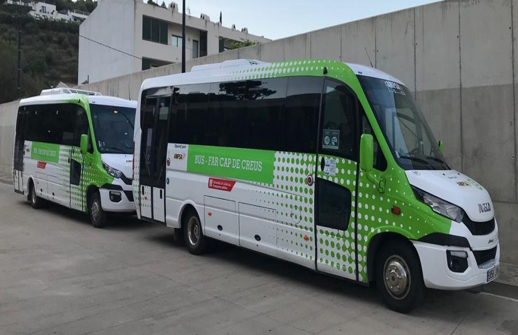
Shuttle busses. Transport system with launchers from Corral d'en Morell to the Far de Cap de Creus.
Parc Natural de Cap de Creus
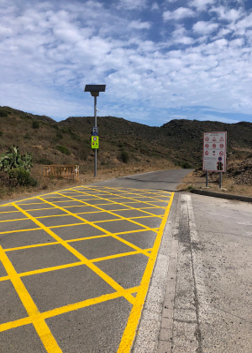
Regulations: Vehicle control using video surveillance cameras to regulate access.
Parc Natural de Cap de Creus
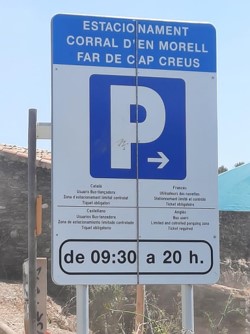
Car Park Regulations. Informative sign about regulations of Coral d'en Morell car park
Parc Natural de Cap de Creus
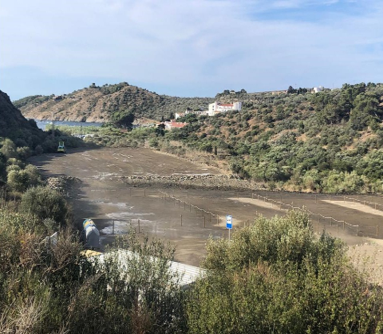
Regulations. Temporary parking area at Corral d'en Morell with 250 vehicle capacity
Parc Natural de Cap de Creus
Background of the project
Despite the management tools in force (public use management plan, planning, compulsory authorisation for activities, regulations for nature sports, signposting), the lack of specific actions tackling access by private vehicle caused negative impacts on conservation, safety and local acceptance of tourism: irregular parking, overnight stays within the Park, difficult access in case of emergency, overcrowding, dissatisfaction of visitors and some reluctance on tourism from locals.
Different sensitive areas and Integral Reserves of the Natural Park were receiving a strong and increasing tourism pressure in last years.
Main need was to manage the large visitor’s flows that visited sensitive areas and Integral Reserves without a specific regulation framework. Due to the effect of the Covid-19 lockdowns, the situation required a more efficient management system to ensure a safe visit for tourists and, at the same time, meet the needs of preservation in sensitive areas.
Solution and actions taken
Implementation of specific management tools such as Public Use Plan for the Integral Nature Reserve, specific management plans in sensitive areas, authorisations for activities, signposting programmes and specific regulations for nature sports.
Approval of new regulations that banned: circulation of motor vehicles off roads and tracks, free camping and overnight stays in vehicles. Access to Integral Nature Reserve was only permitted along signposted paths and roads.
Study on mobility of Punta del Cap de Creus and study on regulations and management on vehicles and visitors flow to beaches in Roses have lead to a better definition and implementation of tourism flows to Integral Nature Reserves in Easter, summer and weekends in spring and autumn.
Restrictions for private vehicles were implemented altogether with bus shuttle service, installation of obstacles, physical barriers, dissemination materials, signposting and on site information provided by staff.
Other institutions or parties involved
Main partners were Roses’ and Cadaqués’ town councils and University of Girona. Cooperation with Rural Agents –regional rangers- and other civil security forces was crucial.
Support of other park’s municipalities allowed closing some access to specific points as a result of continuous incivility behaviours and omission of Natural Park’s regulations.
Involvement of tourism business and tourism information offices was relevant to disseminate visitors flow management initiatives.
Results
Even there is still a long way to go, results are positive as annual data shows change in visitor profiles and access to sensitive areas by private vehicle has significantly decreased.
Participation process to renew the ECST is taking place in 2024 and new actions regarding visitor flows have been already suggested. The approval of the Master Plan for marine area use and management will also lead to improve conservation of the Natural Park.
Challenges
- Acceptance of management measures was main challenge.
- Communication of regulations to visitors is ensured through the support of tourism businesses and tourism offices.
- Information to locals is also targeted by the Natural Park and agreements were reached to ensure they can enjoy natural sites.
- Director of the Natural Park has met several times with tourism business located in the regulated areas to prevent and minimize possible conflicts.
Lessons learned
The adoption of measures tackling frequentation in crowded spaces is accepted among local population as long as they are backed with information on why such measures are implemented and alternative means to reach the natural sites are provided.
Collaboration with city councils and citizen associations is a very effective tool to promote implementation of specific regulations to protect natural areas and achieve conservation objectives.
Contact name
Ivan Bustamante Galera
Institution name
Parc Natural de Cap de Creus
Website(s)
